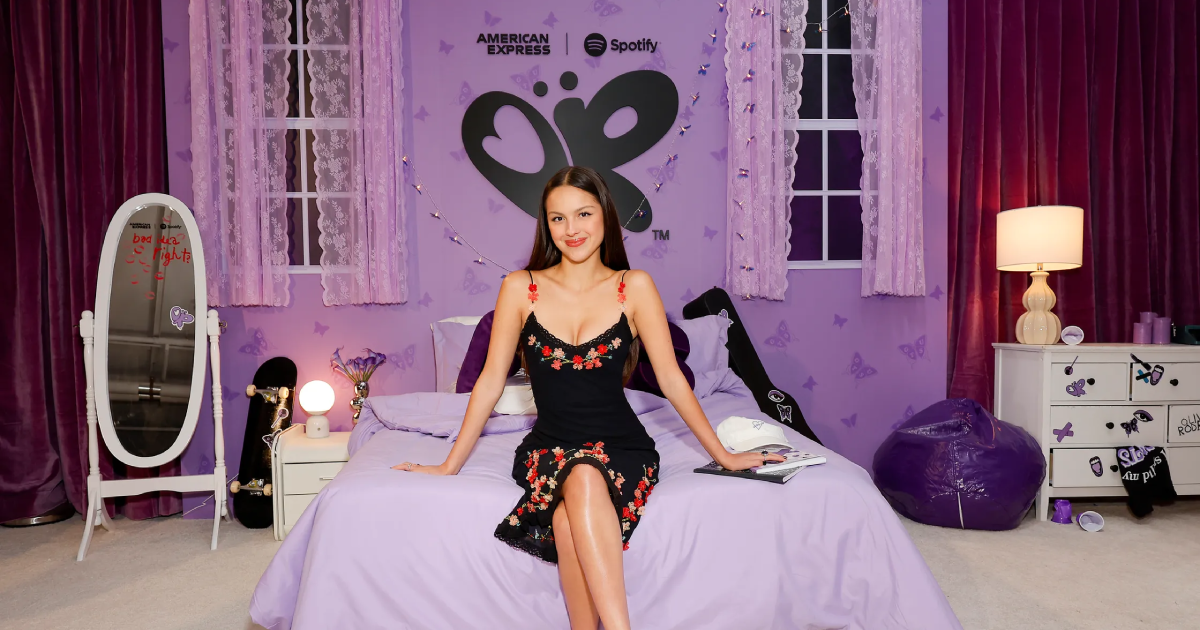Music Artists Chart New Course for Their Brands

By Mark Seavy
Classic rock has long been a major play for the wholesale retail business, but many new artists are charting a different course. These musicians are more focused on selling direct-to-consumer (DTC) from their websites than through retail shelves.
And while that doesn’t mean all young artists are averse to brick-and-mortar retail (Sabrina Carpenter and Olivia Rodrigo are signed with Bravado, for example) they are more dedicated to building their brands online than previous generations of musicians.
“For many young artists, it is making sure that whatever merch they do it aligns with them and their fan base and what they represent,” said Mikey Seitis, Division Merchandise Manager for Music at Hot Topic.
These young artists are dedicated to marketing their merchandise across social media because they understand that fans wearing their face on a t-shirt is good for business, Seitis said, although many of them are focused on creating fashionable items that emulate their aesthetic as an artist instead of featuring their name or likeness. This is especially appealing to fans because owning these items makes them feel like they are part of a community that only other fans will recognize.
But there are artists that have little interest in selling licensed merchandise through brick-and-mortar retail. Singer Chappell Roan, who has topped the charts with songs like “Good Luck, Babe!” and “Hot to Go,” told Rolling Stone magazine she isn’t interested in selling through retailers like H&M. Roan does, however, sell items through her website, including caps, 2024 tour t-shirts, tote bags, and limited-edition paper doll kits that feature her on-stage outfits.
And while singer Billie Eilish opened a cross-border store on the Tmall Global platform in 2021 to sell her “blohsh” branded apparel and accessories—including hoodies, hats, and necklaces—she has also been an advocate for reducing carbon emissions and partnered with H&M on a sustainable clothing collaboration.
“For up-and-coming artists, a lot of it is doing the merchandise in-house and they are a little bit more protective of their brand as whole,” Seitis said. “And when it comes to retail, they are a lot more interested sometimes in their web store or drops with their label.”
Unlike classic rock acts, where sales are seen as more predictable at brick-and-mortar retail, these new artists often gain popularity at ever-increasing speeds thanks to viral social media moments. The rise in music launching or becoming extremely popular on social media came at the same time as music artists becoming more reliant on merchandise revenue for income, given the decline in physical music sales (CDs, vinyl) and the lower royalty payments made by streaming services. Music artists on Spotify get paid between $0.003 and 0.005 per stream on average, or about $3 to $5 per 1,000 streams.
Hot Topic, which once had one person monitoring the music charts, now has four team members scouring social media for rising stars, including through the famed Billboard Charts, which created a Top 50 music list for TikTok. About 15% of Hot Topic’s merchandise mix comes from up-and-coming acts. The retailer, which operates more than 600 stores, was early in carrying merchandise from the likes of My Chemical Romance, 21 Pilots, and Paramore.
“In the hair band days [of the 1980s and 1990s], you knew the bands’ personas and music videos and on-stage performances, but you didn’t know what was going on after the lights turned down,” a music buyer at a mass retailer said. “Now, artists and their brands must extend beyond the performance. You need to take everything into account, including what the artists are listening to and who else they are working with. It is a lot of constant data coming in that must be considered and you never know who is going to blow up.”
Yet getting access to new artists isn’t a given considering that it frequently requires going through band managers, recording companies, and agencies, said Jeff Loeser, Senior VP for Licensing at poster and calendar supplier Trends International.
“There are so many gatekeepers in between the artists and licensees, and everyone wants a piece of the pie,” Loeser said. “They may be selling tons of merchandise during shows, but what about the fan that isn’t in that market? They may want something on the wall and our poster sales won’t affect their business. Sometimes [management worries] that it will or just have unrealistic expectations.”
But many new musicians appear to see the relevancy of promoting their brand across licensed merchandise while also seeking other avenues like films, TV series, and video streaming services to widen the reach of their music.
“It is a huge compliment whenever it is suggested that our music might serve as an adequate soundtrack to a courageous journey of self-discovery that often rubs against societal norms,” Mother Mother lead singer Ryan Guldemond told Rolling Stone Magazine after the band’s music went viral on TikTok. “We really struggled to fit into industry standards of either rock or pop format. It is the right time for people to understand that music.”




